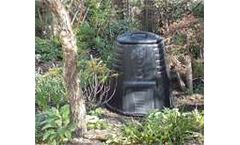Composting Performance Articles & Analysis
6 articles found
Maintaining a compost C:N of 25:1 to 30:1 helps sustain high temperatures for hot composting, also it is the most balanced diet for the best performance of decomposers. ...
The goals of the present study were to (i) verify Parfitt’s (2005) household-level models of home composting diversion, (ii) provide additional insight into how those diversion factors were derived, (iii) extend the modelling approach to consider garden waste in residual and garden waste collections, and (iv) track the performance of compost bins ...
Efforts were made to evaluate the impact of substrate materials (crop residues + sheep manure, cowshed manure, and kitchen waste + leaf litter) on growth and reproduction performance of composting earthworms: Eudrilus eugeniae, Perionyx excavatus and Perionyx sansibaricus, under laboratory conditions. ...
Composting is a robust and cheap biological treatment method useful for all solid biodegradable waste. The performance of composting can vary substantially depending on managing conditions such as oxygen supply and compost temperature. ...
There are three process designs used in composting: aerated static pile composting (compost is formed into piles and aerated with blowers or vacuum pumps), mechanically agitated in-vessel composting (compost is placed in a reactor vessel where it is mixed and aerated), and windrow composting ...
Oxygen uptake of biosolids compost was measured during both laboratory and full-scale studies. Aerobic respirometry of solid samples of compost provided a precise measure of microbial activity. ...





